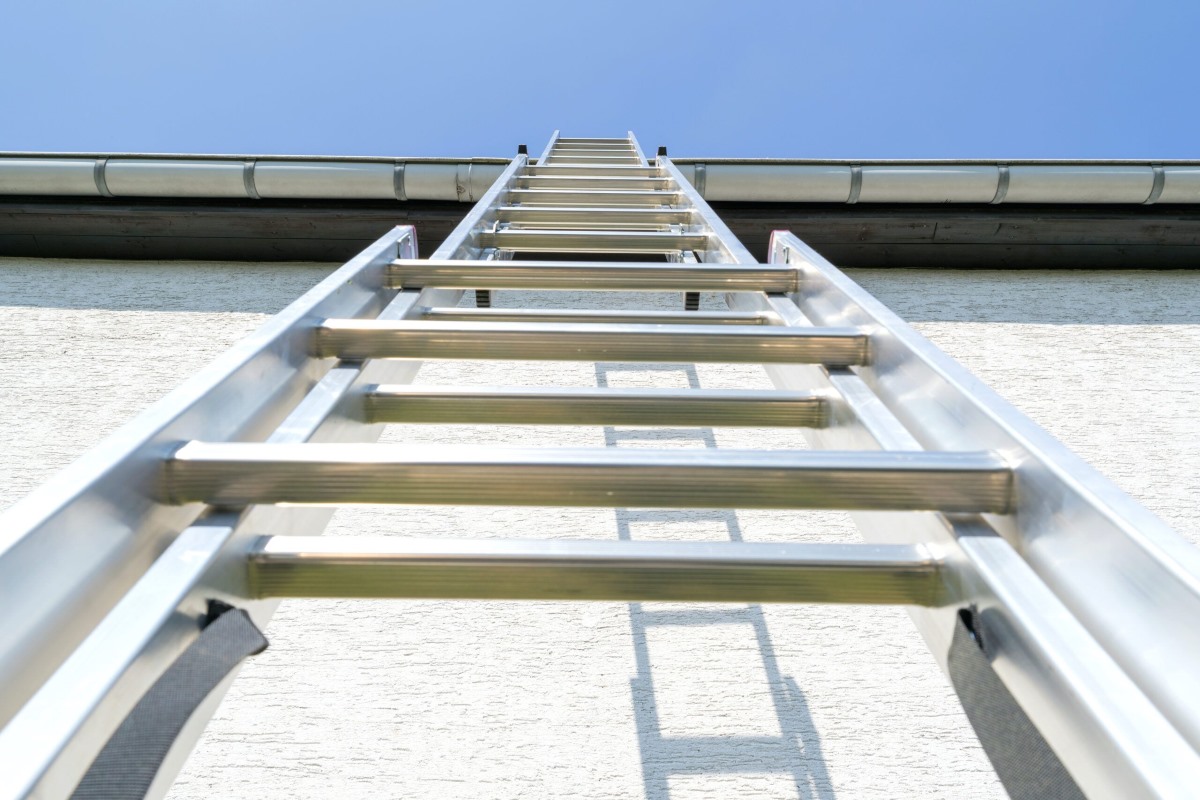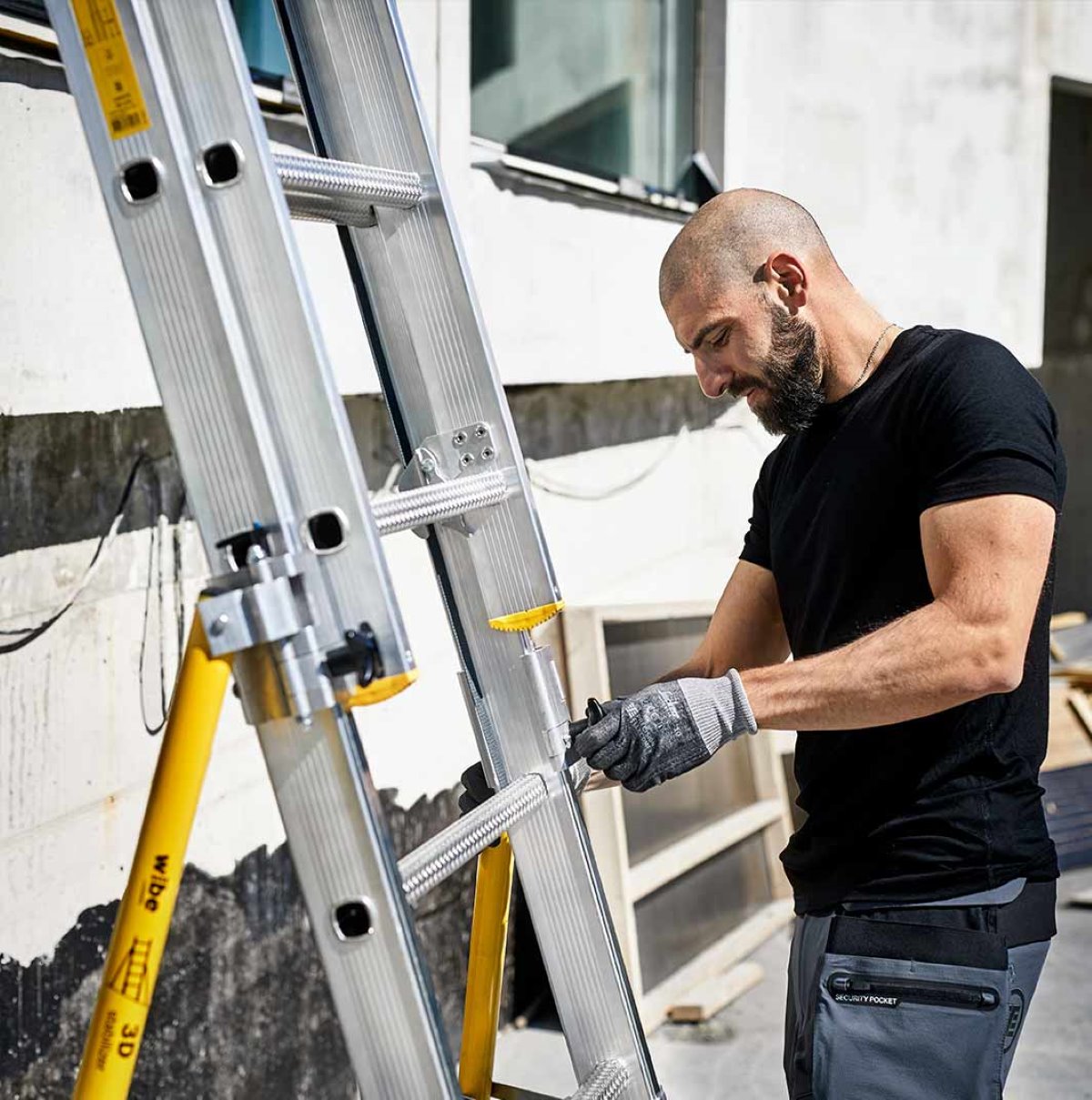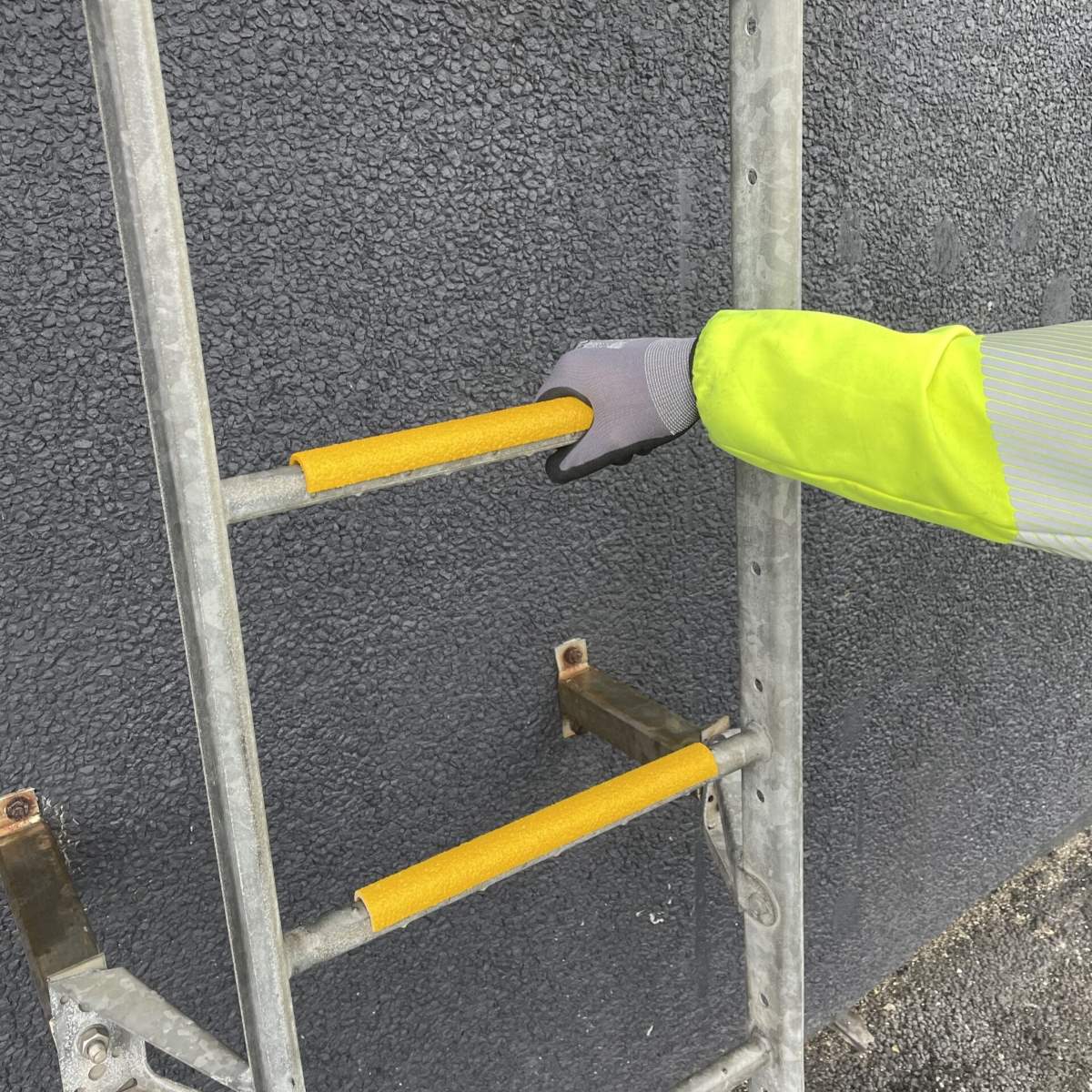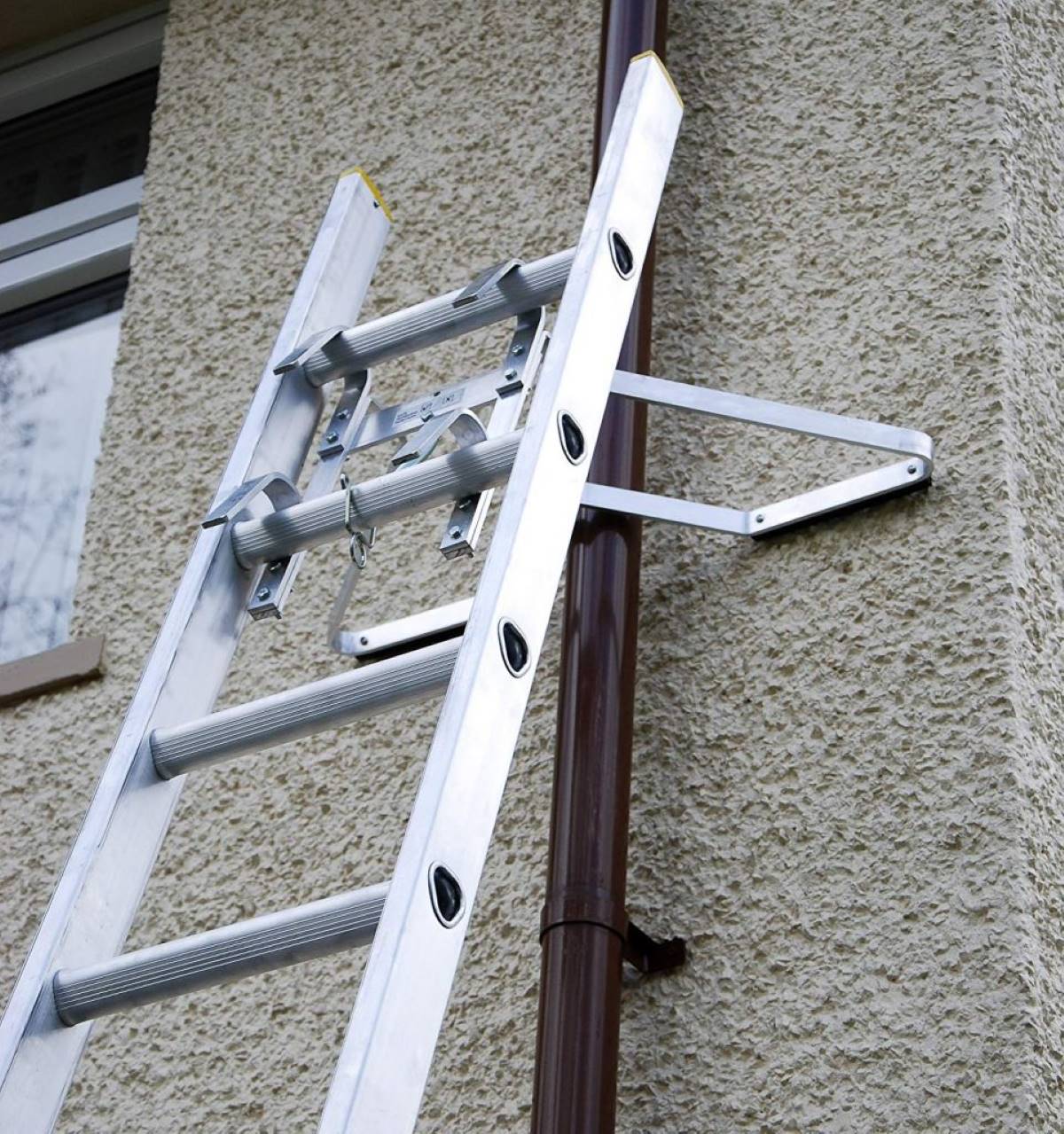

Articles
How Wide Should A Ladder Be
Modified: October 31, 2024
Discover the ideal width for ladders with our informative articles. Learn how to choose the right ladder width for your specific needs and ensure safety and stability.
(Many of the links in this article redirect to a specific reviewed product. Your purchase of these products through affiliate links helps to generate commission for Storables.com, at no extra cost. Learn more)
Introduction
Welcome to our comprehensive guide on ladder width! Ladders are an essential tool for many tasks, whether it’s for DIY projects, construction work, or simply reaching high places. But have you ever wondered how wide a ladder should be for optimum safety and functionality?
In this article, we will delve into the factors to consider when determining the width of a ladder. We will explore the regulatory standards that govern ladder width, discuss the different types of ladders, and provide guidelines for determining the appropriate width for your specific needs. Additionally, we will address important safety considerations to ensure that you can confidently use a ladder without compromising your well-being.
So, if you’re ready to learn everything you need to know about ladder width, let’s jump right in!
Key Takeaways:
- Choosing the right ladder width is crucial for safety and functionality. Consider stability, task requirements, and regulatory standards to determine the optimal width for your needs.
- Prioritize safety when using ladders by choosing the right type, inspecting for damage, and following proper positioning and balance techniques. Familiarize yourself with regulatory standards to ensure compliance.
Read more: How Wide Should Stairs Be
Factors to Consider
When determining the width of a ladder, several factors come into play. These factors will depend on the specific task you need to perform and the environment in which the ladder will be used. Let’s take a look at some important factors to consider:
- Stability: A wider ladder provides more stability and reduces the risk of tipping over. Factors such as the height of the ladder, the weight of the user, and the nature of the task should be taken into account when assessing stability.
- Weight capacity: Different ladders have specific weight capacities, and the width is often designed to accommodate the maximum load. Consider the weight of the user, along with any tools or materials that will be carried while using the ladder.
- Reach: The width of the ladder should enable you to comfortably reach the desired height without overreaching or straining. Ensure that the ladder’s width allows you to maintain a secure grip on the rungs while performing the task.
- Work area: Assess the available space where the ladder will be used. If the work area is narrow or obstructed, a narrower ladder might be necessary to maneuver more easily.
- Accessibility: Consider any obstacles or structures that may impede the positioning or movement of the ladder. Account for factors such as doorways, windows, and other structural elements that may restrict the width of the ladder.
- Transportation: If you need to transport the ladder frequently, ensure that the width is manageable and fits within your vehicle or storage space.
By taking these factors into account, you can make an informed decision about the appropriate width for your ladder, ensuring maximum safety and comfort while using it.
Regulatory Standards
Ladders are subject to regulatory standards and guidelines to ensure user safety. These standards may vary by country or region, so it’s essential to familiarize yourself with the specific regulations in your area. Here are some general guidelines commonly used:
- OSHA (Occupational Safety and Health Administration): In the United States, OSHA sets standards for ladder safety, including guidelines on ladder width. OSHA recommends that the width of a ladder at the top (contact point) should be at least 16 inches (41 cm).
- European Standards (EN): European countries follow the EN 131 standard for ladders, which specifies minimum ladder width requirements. According to EN 131, the minimum width of the rungs should be at least 30 cm (11.8 inches).
- Other regional standards: Different countries and regions may have their own specific ladder width requirements. It’s important to research and comply with the local regulations to ensure that your ladder meets the necessary standards.
Adhering to these regulatory standards is crucial for maintaining compliance and ensuring the safety of ladder users. Always consult your local regulations or safety organizations for the most up-to-date guidelines and requirements.
Next, let’s explore the different types of ladders available to help you determine the most suitable option for your needs.
Types of Ladders
There are various types of ladders available, each designed for specific purposes and environments. Understanding the different types will help you choose the right ladder for your needs:
- Step Ladders: Step ladders are self-supporting ladders with a folding design. They feature two sets of steps, allowing users to climb from either side. Step ladders are popular for household use and low to medium height tasks.
- Straight Ladders: Straight ladders, also known as extension ladders, are single-section ladders that can be leaned against a wall or structure. They are typically used for tasks that require vertical ascents, such as outdoor maintenance, painting, or construction work.
- Platform Ladders: Platform ladders have a large platform at the top, providing a stable and secure work area. They are often used in commercial and industrial settings where a significant amount of time is spent on the ladder.
- Multipurpose Ladders: Multipurpose ladders are versatile ladders that can be adjusted into various positions, such as a step ladder, extension ladder, or scaffolding base. These ladders are ideal for users who require flexibility and adaptability for different tasks.
- Telescoping Ladders: Telescoping ladders are compact and portable ladders that can be extended or retracted to various heights. They are popular for their space-saving design and are commonly used for tasks that require frequent ladder transportation.
When choosing a ladder, consider the nature of your task, the height you need to reach, and the environment in which the ladder will be used. Different ladder types may have specific width requirements, so be sure to check the manufacturer’s recommendations and any regulatory guidelines applicable to that type of ladder.
Now, let’s move on to determining the appropriate width for your ladder.
When choosing a ladder, consider the width of the ladder’s base. A wider base provides more stability and reduces the risk of tipping over, especially when working at higher heights.
Determining the Width
When determining the width of a ladder, it’s essential to take into account the specific requirements of your task and the type of ladder you’re using. Here are some guidelines to help you determine the appropriate width:
- User Comfort: The ladder width should allow the user to stand comfortably on the rungs without feeling cramped or unbalanced. A wider ladder provides more space for the feet and improves stability.
- Task Requirements: Consider the nature of the task you will be performing on the ladder. If your task involves carrying tools or materials, ensure that the ladder width provides enough space for both you and your equipment.
- Ladder Type: Different ladder types may have specific width requirements. Refer to the manufacturer’s instructions or guidelines for the recommended width for the specific ladder type you are using.
- Work Area: Assess the available space where the ladder will be positioned. If the work area is limited or has obstacles, such as furniture or other structures, a narrower ladder may be necessary for easy maneuverability.
- User Weight: Consider the weight of the user who will be climbing the ladder, along with any additional weight from equipment or materials. Ensure that the ladder width supports the total weight without compromising stability.
It’s important to strike a balance between user comfort and ladder stability when determining the width. A ladder that is too narrow may feel cramped and unstable, while a ladder that is overly wide may be cumbersome to maneuver or transport.
Once you have taken these factors into consideration, you’ll be better equipped to choose the appropriate width for your ladder and ensure a safe and comfortable experience while working at height.
Read more: How Wide Should A Walkway Be
Common Ladder Widths
Ladders come in various widths to accommodate different needs and tasks. While specific width measurements may vary depending on the ladder type and manufacturer, here are some common ladder widths:
- Step Ladders: Step ladders typically have a width ranging from 16 to 20 inches (41 to 51 cm). The wider width allows for a stable and secure platform for the user.
- Straight Ladders: Straight ladders usually have a width of around 14 to 18 inches (36 to 46 cm). The narrower width makes them easier to position against a wall or structure.
- Platform Ladders: Platform ladders have a larger width of approximately 20 to 24 inches (51 to 61 cm). The wider platform provides ample space for the user to stand and work comfortably.
- Multipurpose Ladders: The width of multipurpose ladders can vary depending on the configuration. They typically have a width ranging from 16 to 20 inches (41 to 51 cm) for step ladder mode and around 14 to 18 inches (36 to 46 cm) for extension ladder mode.
- Telescoping Ladders: Telescoping ladders usually have a width of around 12 to 16 inches (30 to 41 cm). The narrower width allows for easy portability and storage.
Keep in mind that these are general guidelines, and the actual widths may vary from ladder to ladder. Always refer to the manufacturer’s instructions or specifications for the precise measurements of the ladder you are considering.
Additionally, it is worth noting that adjustable ladders, such as multipurpose and telescoping ladders, often have variable width settings. This versatility allows you to adjust the ladder width to suit your specific needs for different tasks and work environments.
Now that we’ve explored common ladder widths, let’s shift our focus to safety considerations when using ladders.
Safety Considerations
Using ladders safely is of utmost importance to prevent accidents and injuries. Here are some key safety considerations to keep in mind when working with ladders:
- Choose the Right Ladder: Select a ladder that is appropriate for the task at hand. Consider the height you need to reach, the weight capacity of the ladder, and the specific features required for the job.
- Inspect the Ladder: Before each use, inspect the ladder for any damage or defects. Check for loose rungs, bent rails, or any other signs of wear and tear. Never use a ladder that is damaged or faulty.
- Position the Ladder Properly: Place the ladder on a stable, even surface. Ensure that all ladder feet are firmly planted and secure. Avoid placing the ladder on unstable or slippery surfaces.
- Use the Three-Point Control: Maintain three-point contact with the ladder at all times. This means keeping either both feet and one hand or both hands and one foot on the ladder. This helps to stabilize your balance and reduces the risk of falls.
- Avoid Overreaching: Never lean or overreach while on the ladder. Instead, reposition the ladder to maintain a safe working distance from the task at hand. Overreaching can cause the ladder to become unstable, leading to accidents.
- Secure Tools and Equipment: If you need to use tools or carry equipment while on the ladder, secure them in a tool belt or a bucket attached to the ladder. This ensures that your hands are free for gripping the ladder and maintaining stability.
- Maintain Proper Balance: Always keep your body centered on the ladder and avoid making sudden movements. Distribute your weight evenly on the ladder rungs and maintain a firm grip on the side rails.
- Follow Height and Weight Limits: Adhere to the ladder’s height and weight capacity limits specified by the manufacturer. Overloading the ladder with excessive weight or exceeding the maximum height can lead to structural failure.
- Use Fall Protection: For tasks performed at significant heights or on unstable surfaces, consider using appropriate fall protection equipment, such as a safety harness or guardrails.
- Receive Proper Training: If you are not familiar with ladder usage or have little experience, seek proper training on ladder safety. This will equip you with the knowledge and skills to use the ladder effectively and safely.
Remember, these safety considerations are meant to serve as a general guide. Always refer to the safety guidelines and regulations specific to your location and consult with professionals when necessary.
By following these safety measures, you can reduce the risk of accidents and work confidently and safely while using ladders.
Conclusion
Choosing the right width for a ladder is crucial for both safety and functionality. By considering factors such as stability, user comfort, task requirements, and regulatory standards, you can determine the optimal width for your ladder needs.
Understanding the different types of ladders and their corresponding widths is also essential. Step ladders, straight ladders, platform ladders, multipurpose ladders, and telescoping ladders each have their own specific width ranges to accommodate various tasks and environments.
However, it’s important to remember that safety should always be the top priority when working with ladders. Following safety guidelines such as choosing the right ladder for the task, inspecting the ladder for damage, positioning it correctly, maintaining proper balance, avoiding overreaching, and using appropriate fall protection will help prevent accidents and injuries.
Additionally, familiarizing yourself with the regulatory standards, such as those set by OSHA or European EN standards, will ensure compliance and further enhance safety.
In conclusion, selecting the appropriate ladder width, understanding the different types of ladders, and prioritizing safety considerations are all essential steps in using ladders effectively and safely. By doing so, you can confidently tackle your projects, whether they be DIY tasks or professional assignments, while minimizing the risk of accidents and optimizing your productivity.
Frequently Asked Questions about How Wide Should A Ladder Be
Was this page helpful?
At Storables.com, we guarantee accurate and reliable information. Our content, validated by Expert Board Contributors, is crafted following stringent Editorial Policies. We're committed to providing you with well-researched, expert-backed insights for all your informational needs.















0 thoughts on “How Wide Should A Ladder Be”